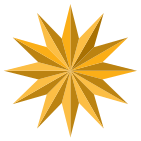Using dice games in the classroom
This article outlines some of the benefits of using dice games in the classroom, especially as a tool for formative assessment.
Using dice here and there
Bernard's article reminds us of the richness of using dice for number, shape and probability.
Dice and spinners interactive
Simple dice and spinners tool for experiments.
Dicey
Football world cup simulation
Tricky track
In this game you throw two dice and find their total, then move the appropriate counter to the right. Which counter reaches the purple box first?
Nice or nasty
There are nasty versions of this dice game but we'll start with the nice ones...
Three dice
Investigate the sum of the numbers on the top and bottom faces of a line of three dice. What do you notice?
More Tug of war
In this game, you can add, subtract, multiply or divide the numbers on the dice. Which will you do so that you get to the end of the number line first?
Roll these dice
Roll two red dice and a green dice. Add the two numbers on the red dice and take away the number on the green. What are all the different possible answers?
Dice and spinner numbers

The twelve pointed star game
Have a go at this game which involves throwing two dice and adding their totals. Where should you place your counters to be more likely to win?
First connect three
Add or subtract the two numbers on the spinners and try to complete a row of three. Are there some numbers that are good to aim for?
A bit of a dicey problem
When you throw two regular, six-faced dice you have more chance of getting one particular result than any other. What result would that be? Why is this?
